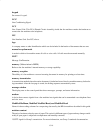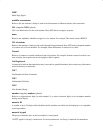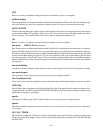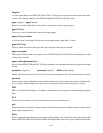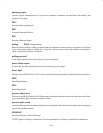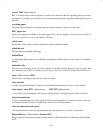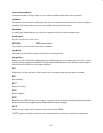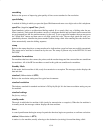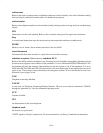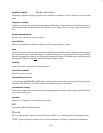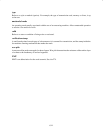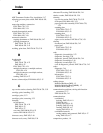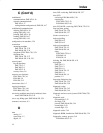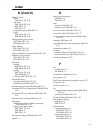G-18
scan scanning
Refers to the optical process the fax machine uses to read the document information for transmission or copy-
ing.
scanner
The part of your fax machine that converts a document into an electronic image suitable for transmission.
scanning glass
The part of the scanner through which a document is read.
scanning method
The method the scanner uses to digitize the original document for transmission. The HP fax machines de-
scribed in this guide use the charge-coupled device method of digitizing documents.
scanning plate
A scanner part that holds the original document close to the scanning glass as the document movers through
the ADF.
selection
Refers to an option or choice that the user invokes. For example, the current selection contains one parameter.
select mode
A sequence (Advanced Functions) that allows the operator to turn various features on or off for the next trans-
action. The features that can be changed in the select mode are the communication journal, password trans-
mission, receive-to-memory, and error correction mode.
Self Test
Refers to the automatic diagnostic routine performed by the fax machine when turned ON.
semi-dual access
The ability of the fax machine to send or receive a fax while a received fax is still printing.
setting
Refers to a function or option selection (as in a certain position or choice of uses). For example, the setting
of fax parameters can be set to ON or OFF.
shared reception mode
A mode in which the fax machine distinguishes between document transmissions and voice calls, handling
calls from fax stations and passing voice calls to either the handset or an attached answering machine.
silent detection
Refers to the fax machine’s ability to react to undetected fax signals. Can be enabled or disabled by the user
through fax parameter 12 in the HP FAX-200 and FAX-310. Can be enabled or disabled by the user through
fax parameter 20 in the HP FAX-900 and FAX-950.
skew
The way an image prints in relation to the paper. The borders of a skewed image do not run parallel to the
edges of the paper.



